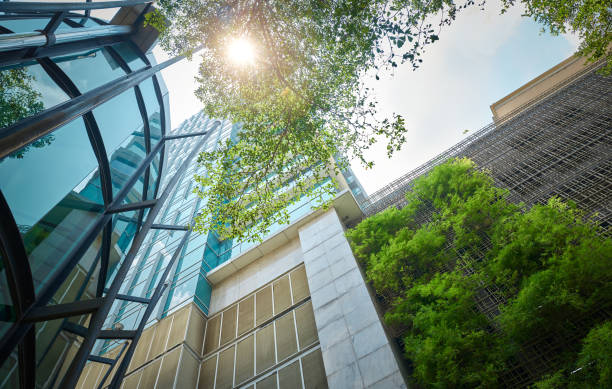
Green Roofs in Sustainable Buildings: A Growing Trend
As we continue to face the challenges of climate change and urbanization, the concept of green roofs in sustainable buildings has emerged as a beacon of hope. These innovative structures not only enhance the aesthetic appeal of urban landscapes but also offer a myriad of environmental benefits. Green roofs are becoming an integral part of innovative housing designs, improving energy efficiency and promoting biodiversity.
Incorporating green roofs into sustainable buildings is a forward-thinking strategy that aligns with global efforts to create more livable and resilient cities. By transforming traditional roofs into verdant spaces, we can significantly reduce urban heat and manage stormwater more effectively. As part of a broader movement towards sustainability, green roofs offer a practical solution to some of the most pressing environmental issues of our time.

What Are Green Roofs?
A green roof is a roof that is partially or completely covered with vegetation and a growing medium, planted over a waterproofing membrane. They may include additional layers such as a root barrier and drainage system. Construction materials for green roofs are carefully selected to support plant life while maintaining structural integrity.
Types of Green Roofs
Green roofs come in two main types: extensive green roofs, which are lightweight and require minimal maintenance, and intensive green roofs, which are heavier and can support a wider variety of plants, including trees and shrubs.
Benefits of Green Roofs
Environmental Advantages
One of the most significant benefits of green roofs is their ability to reduce the urban heat island effect. By absorbing sunlight and providing shade, they help to lower temperatures in urban areas. Additionally, green roofs improve air quality by filtering pollutants and absorbing carbon dioxide.
Economic Advantages
Green roofs can extend the lifespan of a roof by protecting it from harsh weather and ultraviolet radiation. Moreover, they contribute to energy savings by providing natural insulation, reducing the need for heating and cooling.
Social and Health Benefits
Green roofs create green spaces in urban areas, offering residents a place to relax and connect with nature. This can enhance mental well-being and foster a sense of community.
Challenges and Considerations
Installation and Maintenance
While green roofs offer numerous benefits, they also present challenges. Proper installation and regular maintenance are crucial to ensure their longevity and effectiveness.
Structural Requirements
Buildings must be assessed for their structural capacity to support the additional weight of a green roof. This consideration is vital in the planning and design phase.
Green Roofs in Urban Planning
As cities strive to become more sustainable, green roofs play a critical role in urban planning. They contribute to sustainable development goals by promoting green infrastructure and enhancing urban resilience.
Policy Support
Many cities are implementing policies to encourage the adoption of green roofs, offering incentives and support for property owners willing to invest in this green technology.
Case Studies
Several cities around the world have successfully integrated green roofs into their urban landscapes. For instance, Singapore’s commitment to becoming a ‘City in a Garden’ has led to widespread adoption of green roofs across the city.
The Future of Green Roofs
The future of green roofs in sustainable buildings looks promising. As technology advances and awareness of environmental issues grows, we can expect to see even more innovative applications of green roof technology in urban settings.
Innovations on the Horizon
Emerging technologies, such as smart irrigation systems and lightweight substrates, are making green roofs more accessible and efficient. These innovations are likely to drive further adoption of green roofs in the coming years.
Conclusion
In conclusion, green roofs are a vital component of sustainable urban development. They offer a practical solution to environmental challenges while enhancing the quality of life in cities. As we continue to explore ways to create more sustainable and livable urban environments, green roofs will undoubtedly play a key role in shaping the future of urban landscapes.

FAQs
What are the maintenance requirements for green roofs?
Maintenance requirements vary depending on the type of green roof. Extensive green roofs need minimal maintenance, while intensive green roofs require regular care, including watering, weeding, and fertilizing.
Can existing buildings be retrofitted with green roofs?
Yes, many existing buildings can be retrofitted with green roofs, but structural assessments must be conducted to ensure the building can support the additional weight.
How do green roofs contribute to biodiversity?
Green roofs provide habitats for various plant and animal species, supporting biodiversity in urban areas. They attract pollinators like bees and butterflies and can serve as stepping stones for wildlife in cities.
This article contains affiliate links. We may earn a commission at no extra cost to you.